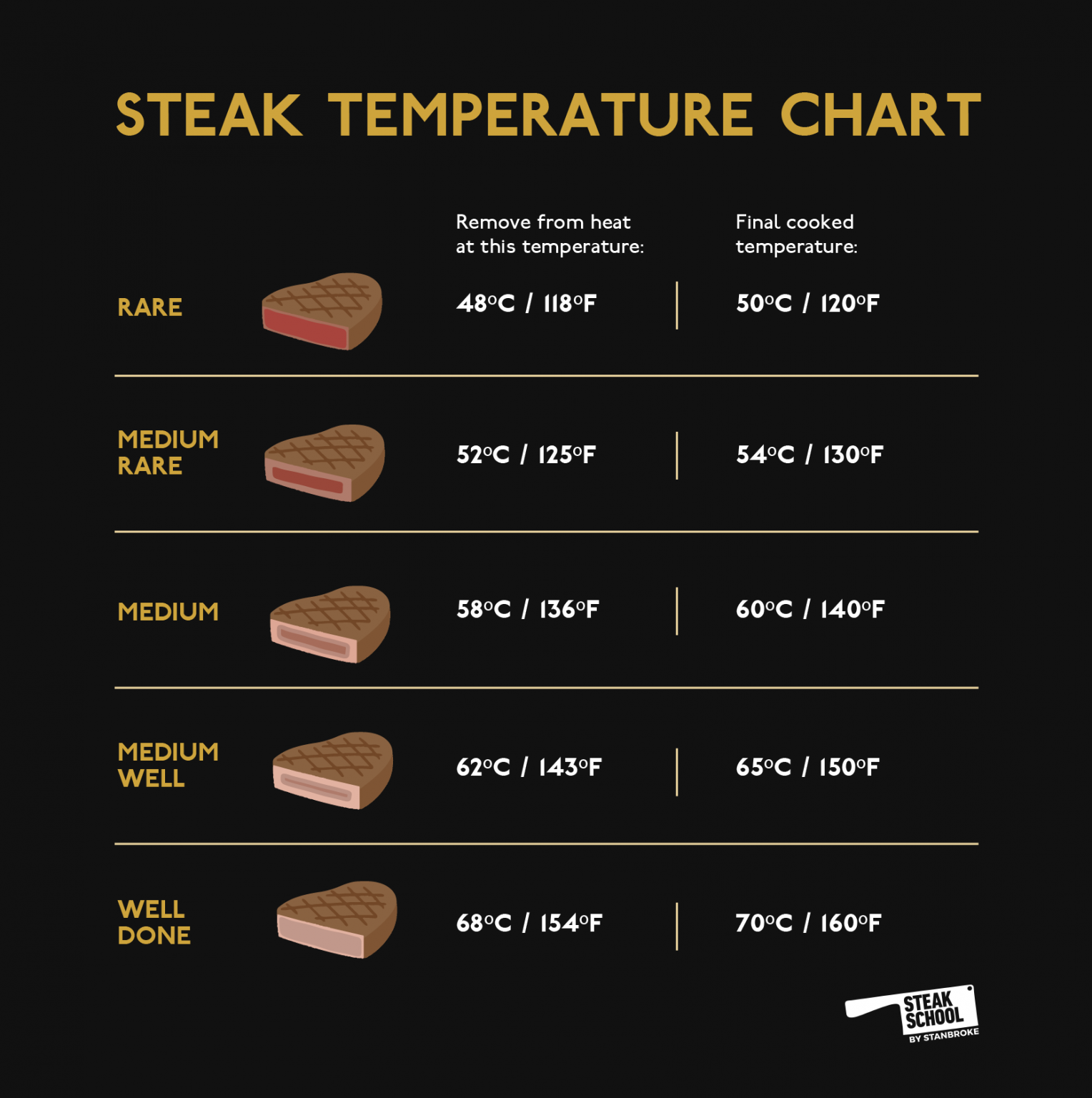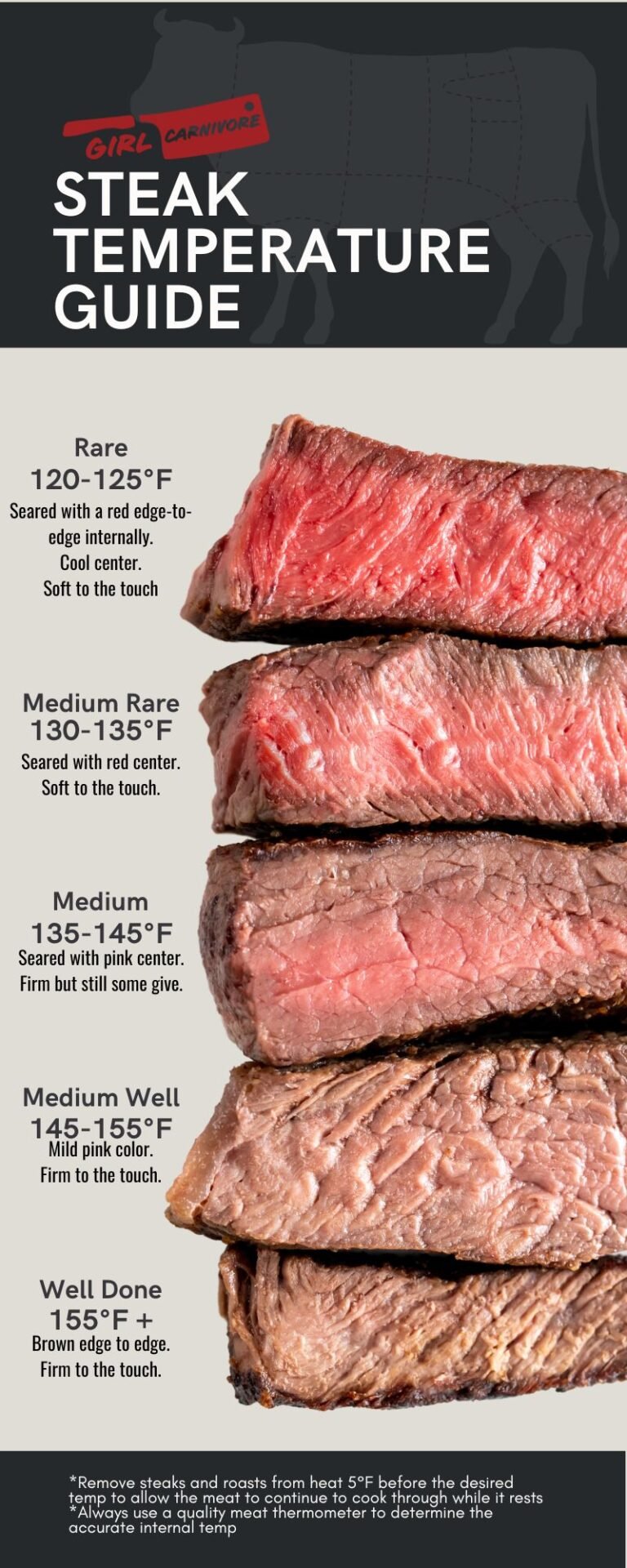Steak is more than just food—it's an experience. Whether you're cooking at home or dining out, achieving that perfect medium steak is all about nailing the internal temperature for a medium steak. But what exactly does it mean to cook a steak to medium, and why does the internal temperature matter so much? Let’s dive into the juicy details.
Imagine this: you're standing in front of your grill, spatula in hand, trying to decide when to pull that beautiful piece of meat off the heat. You’ve heard the terms "rare," "medium-rare," and "medium" thrown around, but do you really know what they mean? Cooking steak isn’t just about timing—it’s about temperature. And if you want a perfectly cooked medium steak, understanding the internal temperature is key.
Now, let’s get one thing straight: not everyone agrees on the exact internal temperature for a medium steak. Some chefs swear by 135°F, while others think 140°F is the sweet spot. But don’t worry—we’re here to break it all down for you, so you can cook with confidence every single time.
Read also:Unveiling The Mystery Of Maaza49 A Comprehensive Guide
Why Does Internal Temperature Matter?
Okay, listen up. The internal temperature of your steak determines how cooked it is, and that affects its texture, flavor, and even safety. A steak cooked to medium will have a nice pink center, a hint of chewiness, and a rich, beefy taste. But if you overcook it, you end up with something dry and flavorless. And nobody wants that.
Here’s the deal: beef starts to lose moisture as it cooks. If you let it go past the ideal temperature, the juices evaporate, leaving you with a tough, bland piece of meat. On the flip side, if you undercook it, you risk foodborne illnesses (not cool). So, mastering the internal temperature is crucial for both taste and safety.
What Is the Ideal Internal Temperature for a Medium Steak?
Alright, here’s the golden number: the ideal internal temperature for a medium steak falls between 135°F and 145°F (57°C to 63°C). Most people aim for around 140°F, which gives you that perfect balance of tenderness and flavor. But hey, it’s your steak—so feel free to tweak it based on your preference!
Let’s break it down further:
- 130°F - 135°F: Medium-rare to medium
- 140°F - 145°F: Medium
- 150°F - 155°F: Medium-well
Remember, the temperature will continue to rise slightly after you take the steak off the heat due to carryover cooking. That’s why it’s always a good idea to remove it a few degrees below your target temp.
How to Measure the Internal Temperature
So, how do you actually measure the internal temperature for a medium steak? Easy—grab a meat thermometer. Digital instant-read thermometers are your best friend here because they’re fast, accurate, and super easy to use. Just stick the probe into the thickest part of the steak, avoiding any fat or bone, and boom—you’ve got your reading.
Read also:Unveiling The Power Of Mydesinet1 Your Ultimate Guide To A Smarter Digital World
Top Thermometer Picks
If you’re in the market for a good thermometer, here are a few options worth considering:
- ThermoWorks Thermapen ONE
- Meater Wireless Smart Meat Thermometer
- Instant Read Digital Meat Thermometer by Taylor
Pro tip: Don’t skimp on quality when it comes to thermometers. A reliable tool can make all the difference in your cooking game.
Tips for Cooking the Perfect Medium Steak
Alright, let’s talk technique. Achieving that perfect medium steak isn’t just about the internal temperature—it’s about the whole process. Here are some tips to help you nail it every time:
1. Start with Quality Meat
You can’t make a great steak with bad ingredients. Look for high-quality cuts like ribeye, sirloin, or filet mignon. And if you’re splurging, go for USDA Prime or Wagyu—it’s worth it, trust me.
2. Let It Rest
Before cooking, let your steak sit at room temperature for about 30 minutes. This helps it cook more evenly. Plus, who doesn’t love a good chill session before hitting the grill?
3. Season Simply
Sometimes less is more. A good steak only needs salt, pepper, and maybe a drizzle of olive oil. Let the natural flavors shine!
4. Use High Heat
CrANK up that heat! You want a good sear on the outside, which locks in those delicious juices. Whether you’re using a grill, skillet, or oven, make sure it’s hot before you start cooking.
5. Rest After Cooking
Once your steak hits the right internal temperature, let it rest for a few minutes before slicing. This allows the juices to redistribute, ensuring a tender, juicy bite every time.
Common Mistakes to Avoid
Even the best cooks make mistakes sometimes. Here are a few pitfalls to watch out for when cooking a medium steak:
- Cooking a cold steak straight from the fridge
- Flipping the steak too often
- Not letting it rest after cooking
- Overcooking or undercooking
- Using a dull knife to slice
By avoiding these common errors, you’ll be well on your way to steak perfection.
The Science Behind Cooking Steak
Ever wondered why steak behaves the way it does when cooked? It’s all about chemistry. As the internal temperature rises, proteins in the meat begin to denature, collagen breaks down, and fats melt. These processes work together to create the texture and flavor we love in a perfectly cooked steak.
At around 120°F, myoglobin (the protein responsible for the red color in meat) begins to break down, turning the steak from red to pink. By the time you hit 140°F, the steak has reached that magical medium point where it’s tender, juicy, and full of flavor.
Pairing Your Medium Steak
Now that you’ve cooked the perfect medium steak, it’s time to think about sides and drinks. Here are a few ideas to elevate your meal:
Side Dishes
- Roasted potatoes
- Grilled vegetables
- Creamed spinach
- Garlic mashed potatoes
Drink Pairings
- Red wine (Cabernet Sauvignon or Malbec)
- Craft beer (stout or porter)
- Whiskey (on the rocks)
Remember, pairing is all about personal preference, so don’t be afraid to experiment and find what works best for you.
FAQs About Internal Temperature for a Medium Steak
1. Can I use a meat thermometer for other types of meat?
Absolutely! Meat thermometers work great for chicken, pork, lamb, and even fish. Just make sure to check the recommended internal temperatures for each type of meat.
2. What happens if I overcook my steak?
Overcooked steak becomes dry and tough because all the juices evaporate. Stick to the recommended internal temperature for a medium steak to avoid this fate.
3. Is it safe to eat medium steak?
Yes, as long as the internal temperature reaches at least 130°F and stays there for a few minutes. This kills any harmful bacteria that might be present.
4. Can I cook steak without a thermometer?
You can try, but it’s risky. The touch method or color check might work for seasoned pros, but for most people, a thermometer is the safest bet.
Conclusion
Cooking the perfect medium steak doesn’t have to be rocket science. By mastering the internal temperature for a medium steak and following some simple tips, you can achieve steakhouse-quality results right at home. Remember, practice makes perfect, so don’t be afraid to experiment and find your ideal temp.
Now it’s your turn—grab that steak, fire up the grill, and show off your newfound knowledge. And don’t forget to share this article with your fellow steak enthusiasts. Happy cooking!
Table of Contents
- Why Does Internal Temperature Matter?
- What Is the Ideal Internal Temperature for a Medium Steak?
- How to Measure the Internal Temperature
- Tips for Cooking the Perfect Medium Steak
- Common Mistakes to Avoid
- The Science Behind Cooking Steak
- Pairing Your Medium Steak
- FAQs About Internal Temperature for a Medium Steak
- Conclusion



